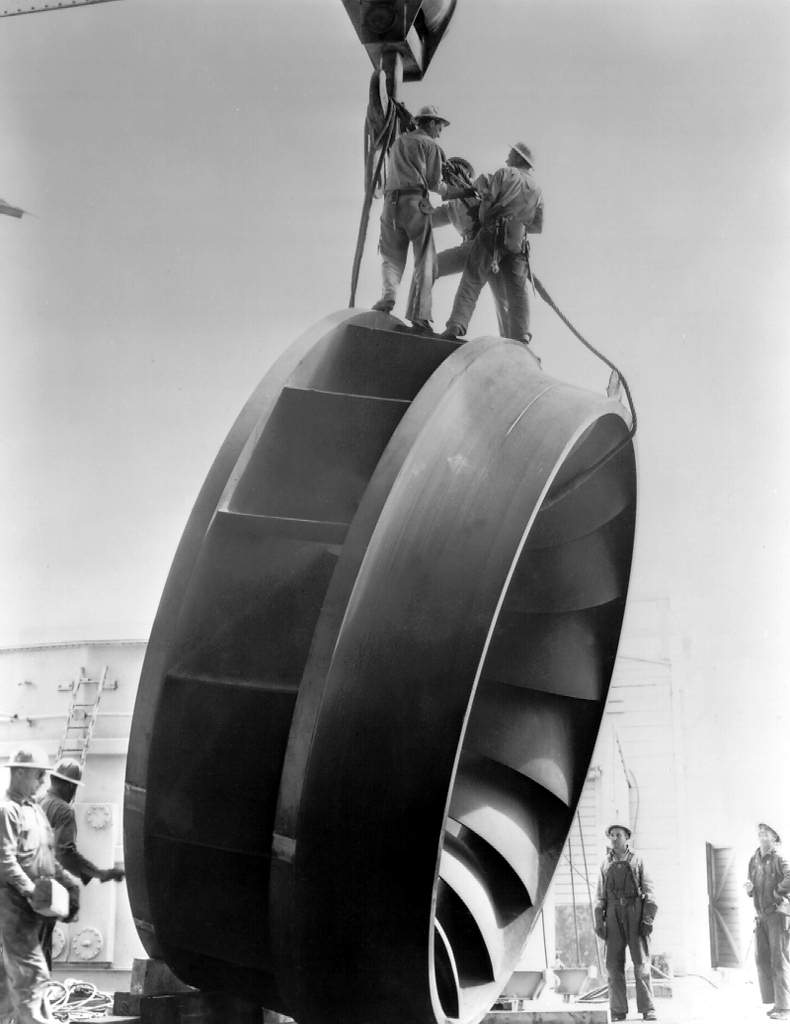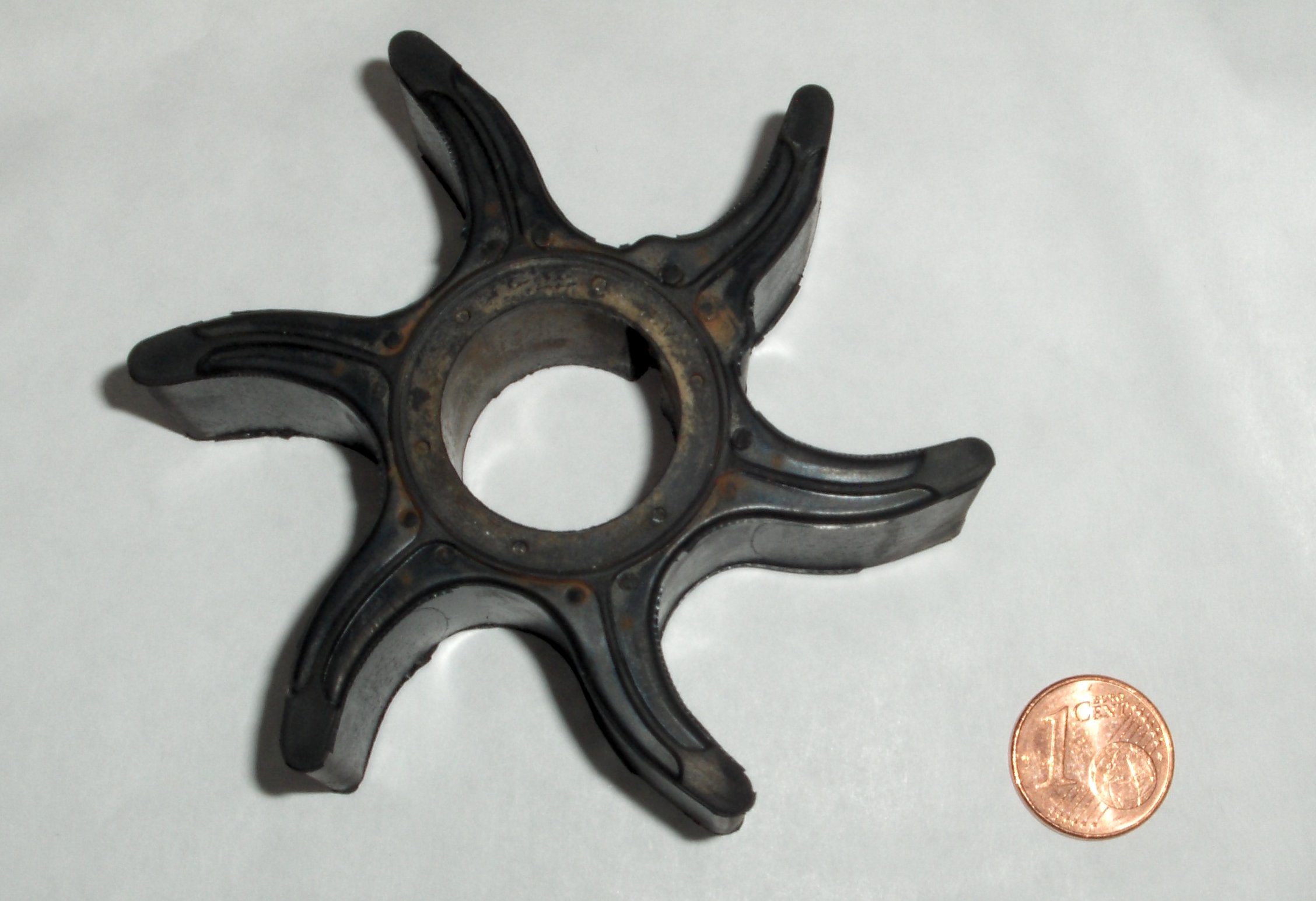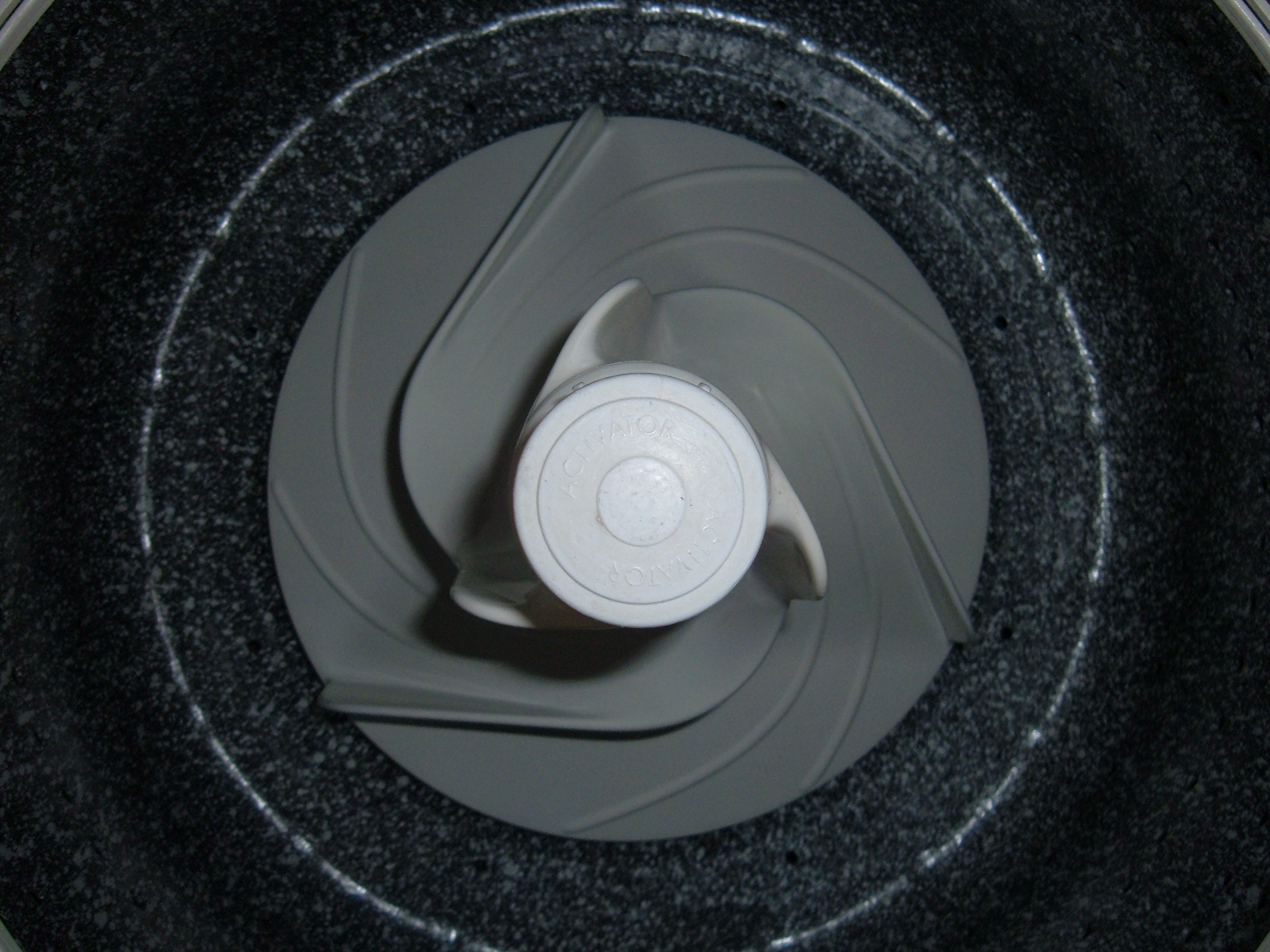Impellor on:
[Wikipedia]
[Google]
[Amazon]
An impeller or impellor is a 

 An impeller is a rotating component of a
An impeller is a rotating component of a
 Impellers in agitated tanks are used to mix fluids or slurry in the tank. This can be used to combine materials in the form of solids, liquids and gas. Mixing the fluids in a tank is very important if there are
Impellers in agitated tanks are used to mix fluids or slurry in the tank. This can be used to combine materials in the form of solids, liquids and gas. Mixing the fluids in a tank is very important if there are
 Some constructions of top loading
Some constructions of top loading
rotor
Rotor may refer to:
Science and technology
Engineering
*Rotor (electric), the non-stationary part of an alternator or electric motor, operating with a stationary element so called the stator
*Helicopter rotor, the rotary wing(s) of a rotorcraft ...
used to increase the pressure and flow of a fluid. It is the opposite of a turbine
A turbine ( or ) (from the Greek , ''tyrbē'', or Latin ''turbo'', meaning vortex) is a rotary mechanical device that extracts energy from a fluid flow and converts it into useful work. The work produced by a turbine can be used for generating ...
, which extracts energy from, and reduces the pressure of, a flowing fluid.

In pumps

 An impeller is a rotating component of a
An impeller is a rotating component of a centrifugal pump
Centrifugal pumps are used to transport fluids by the conversion of rotational kinetic energy to the hydrodynamic energy of the fluid flow. The rotational energy typically comes from an engine or electric motor. They are a sub-class of dynamic ...
that accelerates fluid outward from the center of rotation, thus transferring energy
In physics, energy (from Ancient Greek: ἐνέργεια, ''enérgeia'', “activity”) is the quantitative property that is transferred to a body or to a physical system, recognizable in the performance of work and in the form of hea ...
from the motor
An engine or motor is a machine designed to convert one or more forms of energy into mechanical energy.
Available energy sources include potential energy (e.g. energy of the Earth's gravitational field as exploited in hydroelectric power ...
that drives the pump to the fluid
In physics, a fluid is a liquid, gas, or other material that continuously deforms (''flows'') under an applied shear stress, or external force. They have zero shear modulus, or, in simpler terms, are substances which cannot resist any shea ...
being pumped. The velocity achieved by the impeller transfers into pressure when the outward movement of the fluid is confined by the pump casing. An impeller is usually a short cylinder with an open inlet (called an eye) to accept incoming fluid, vanes to push the fluid
In physics, a fluid is a liquid, gas, or other material that continuously deforms (''flows'') under an applied shear stress, or external force. They have zero shear modulus, or, in simpler terms, are substances which cannot resist any shea ...
radially, and a splined, keyed, or threaded bore to accept a drive shaft.
It can be cheaper to cast
Cast may refer to:
Music
* Cast (band), an English alternative rock band
* Cast (Mexican band), a progressive Mexican rock band
* The Cast, a Scottish musical duo: Mairi Campbell and Dave Francis
* ''Cast'', a 2012 album by Trespassers William
...
an impeller and its spindle as one piece, rather than separately. This combination is sometimes referred to simply as the "rotor."
Types
Open impellers
An open impeller has a hub with attached vanes and is mounted on a shaft. The vanes do not have a wall, making open impellers slightly weaker than closed or semi-closed impellers. However, as the side plate is not fixed to the inlet side of the vane, the blade stresses are significantly lower. In pumps, the fluid enters the impeller's eye, where vanes add energy and direct it to the nozzle discharge. A close clearance between vanes and pump volute or back plate prevent most of fluid from flowing back. Wear on the bowl and edge of vane can be compensated by adjusting the clearance to maintain efficiency over time. Because the internal parts are visible, open impellers are easier to inspect for damage and maintain than closed impellers. They can also be more easily modified to change flow properties. Open impellers operate on a narrow range ofspecific speed
Specific speed ''N's'', is used to characterize turbomachinery speed.
Common commercial and industrial practices use dimensioned versions which are of equal utility. Specific speed is most commonly used in pump applications to define the suc ...
. Open impellers are usually faster and easier to maintain. For small pumps and those dealing with suspended solids, open impellers are generally used. Sand locking does not occur as easily as with closed type.
Semi-closed impellers
A semi-closed impeller has an additional back wall, giving it more strength. These impellers can pass mixed solid-liquid mixtures at the cost of reduced efficiency.Closed or shrouded impellers
The construction of closed impellers includes additional back and front walls on both sides of vanes that enhances its strength. This also reduces thethrust load
Thrust is a reaction (physics), reaction force (physics), force described quantitatively by Newton's third law. When a system expels or acceleration, accelerates mass in one direction, the accelerated mass will cause a force of equal magnitude ...
on the shaft, increasing bearing life and reliability and reducing shafting cost. However, this more complicated design, including the use of additional wear rings, makes closed impellers more difficult to manufacture and more expensive than open impellers. A closed impeller's efficiency decreases as wear ring clearance increases with use. However, adjustment of impeller bowl clearance does not affect the wear on vanes as critically as open impeller. Closed impellers can be used on a wider range specific speed than open impellers. They are generally used in large pumps and clear water applications. These impellers can't perform effectively with solids and become difficult to clean if clogged.
Screw impellers
The screw impeller design aligns more with an axial progressive channel that allows for solids to be openly handled when rotating.In centrifugal compressors
The main part of acentrifugal compressor
Centrifugal compressors, sometimes called impeller compressors or radial compressors, are a sub-class of dynamic axisymmetric work-absorbing turbomachinery.
They achieve pressure rise by adding energy to the continuous flow of fluid through th ...
is the impeller. An open impeller has no cover, therefore it can work at higher speeds. A compressor with a covered impeller can have more stages than one that has an open impeller.
In water jets
Some impellers are similar to smallpropeller
A propeller (colloquially often called a screw if on a ship or an airscrew if on an aircraft) is a device with a rotating hub and radiating blades that are set at a pitch to form a helical spiral which, when rotated, exerts linear thrust upon ...
s but without the large blades. Among other uses, they are used in water jets to power high speed boats.
Because impellers do not have large blades to turn, they can spin at much higher speeds than propellers. The water forced through the impeller is channeled by the housing, creating a water jet that propels the vessel forward. The housing is normally tapered into a nozzle to increase the speed of the water, which also creates a Venturi effect
The Venturi effect is the reduction in fluid pressure that results when a fluid flows through a constricted section (or choke) of a pipe. The Venturi effect is named after its discoverer, the 18th century Italian physicist, Giovanni Battista ...
in which low pressure behind the impeller pulls more water towards the blades, tending to increase the speed.
To work efficiently, there must be a close fit between the impeller and the housing. The housing is normally fitted with a replaceable ''wear ring'' which tends to wear as sand
Sand is a granular material composed of finely divided mineral particles. Sand has various compositions but is defined by its grain size. Sand grains are smaller than gravel and coarser than silt. Sand can also refer to a soil texture, textur ...
or other particles are thrown against the housing side by the impeller.
Vessels using impellers are normally steered by changing the direction of the water jet.
Compare to propeller
A propeller (colloquially often called a screw if on a ship or an airscrew if on an aircraft) is a device with a rotating hub and radiating blades that are set at a pitch to form a helical spiral which, when rotated, exerts linear thrust upon ...
and jet aircraft engines.
In agitated tanks
 Impellers in agitated tanks are used to mix fluids or slurry in the tank. This can be used to combine materials in the form of solids, liquids and gas. Mixing the fluids in a tank is very important if there are
Impellers in agitated tanks are used to mix fluids or slurry in the tank. This can be used to combine materials in the form of solids, liquids and gas. Mixing the fluids in a tank is very important if there are gradient
In vector calculus, the gradient of a scalar-valued differentiable function of several variables is the vector field (or vector-valued function) \nabla f whose value at a point p is the "direction and rate of fastest increase". If the gr ...
s in conditions such as temperature or concentration.
There are two types of impellers, depending on the flow regime created (see figure):
* Axial flow impeller
* Radial flow impeller
Radial flow impellers impose essentially shear stress
Shear stress, often denoted by (Greek: tau), is the component of stress coplanar with a material cross section. It arises from the shear force, the component of force vector parallel to the material cross section. '' Normal stress'', on ...
to the fluid, and are used, for example, to mix immiscible liquids or in general when there is a deformable interface
Interface or interfacing may refer to:
Academic journals
* ''Interface'' (journal), by the Electrochemical Society
* '' Interface, Journal of Applied Linguistics'', now merged with ''ITL International Journal of Applied Linguistics''
* '' Int ...
to break. Another application of radial flow impellers is the mixing of very viscous fluids.
Axial flow impellers impose essentially bulk motion and are used on homogenization processes, in which increased fluid volumetric flow rate
In physics and engineering, in particular fluid dynamics, the volumetric flow rate (also known as volume flow rate, or volume velocity) is the volume of fluid which passes per unit time; usually it is represented by the symbol (sometimes ). I ...
is important.
Impellers can be further classified principally into three sub-types:
*Propeller
A propeller (colloquially often called a screw if on a ship or an airscrew if on an aircraft) is a device with a rotating hub and radiating blades that are set at a pitch to form a helical spiral which, when rotated, exerts linear thrust upon ...
*Paddles
A paddle is a handheld tool with an elongated handle and a flat, widened distal end (i.e. the ''blade''), used as a lever to apply force onto the bladed end. It most commonly describes a completely handheld tool used to propel a human-powered wa ...
*Turbines
A turbine ( or ) (from the Greek , ''tyrbē'', or Latin ''turbo'', meaning vortex) is a rotary mechanical device that extracts energy from a fluid flow and converts it into useful work. The work produced by a turbine can be used for generating e ...
Propellers
Propellers are axial thrust-giving elements. These elements give a very high degree of swirling in the vessel. The flow pattern generated in the fluid resembles a helix.In washing machines
washing machines
A washing machine (laundry machine, clothes washer, washer, or simply wash) is a home appliance used to wash laundry. The term is mostly applied to machines that use water as opposed to dry cleaning (which uses alternative cleaning fluids and ...
use impellers to agitate
Agitation may refer to:
* Agitation (action), putting into motion by shaking or stirring, often to achieve mixing
* An emotional state of excitement or restlessness
** Psychomotor agitation, an extreme form of the above, which can be part of a ...
the laundry during washing.
Firefighting rank badge
Fire services
A fire department (American English) or fire brigade (Commonwealth English), also known as a fire authority, fire district, fire and rescue, or fire service in some areas, is an organization that provides fire prevention and fire suppression se ...
in the United Kingdom
The United Kingdom of Great Britain and Northern Ireland, commonly known as the United Kingdom (UK) or Britain, is a country in Europe, off the north-western coast of the European mainland, continental mainland. It comprises England, Scotlan ...
and many countries of the Commonwealth
A commonwealth is a traditional English term for a political community founded for the common good. Historically, it has been synonymous with " republic". The noun "commonwealth", meaning "public welfare, general good or advantage", dates from th ...
use a stylized depiction of an impeller as a rank badge. Officers wear one or more on their epaulette
Epaulette (; also spelled epaulet) is a type of ornamental shoulder piece or decoration used as insignia of rank by armed forces and other organizations. Flexible metal epaulettes (usually made from brass) are referred to as ''shoulder scales ...
s or the collar of their firefighting uniform as an equivalent to the "pips" worn by the army
An army (from Old French ''armee'', itself derived from the Latin verb ''armāre'', meaning "to arm", and related to the Latin noun ''arma'', meaning "arms" or "weapons"), ground force or land force is a fighting force that fights primarily on ...
and police
The police are a constituted body of persons empowered by a state, with the aim to enforce the law, to ensure the safety, health and possessions of citizens, and to prevent crime and civil disorder. Their lawful powers include arrest a ...
.
In air pumps
Air pumps, such as theroots blower
The Roots-type blower is a
positive displacement lobe pump which operates by pumping a fluid with a pair of meshing lobes resembling a set of stretched gears. Fluid is trapped in pockets surrounding the lobes and carried from the intake si ...
, use meshing impellers to move air through a system. Applications include blast furnaces, ventilation systems, and superchargers for internal combustion engines.
In medicine
Impellers are an integral part of axial-flow pumps, used inventricular assist devices
A ventricular assist device (VAD) is an electromechanical device for assisting cardiac circulation, which is used either to partially or to completely replace the function of a failing heart. The function of a VAD differs from that of an artifici ...
to augment or fully replace cardiac function.
See also
*Axial fan design
An axial fan is a type of fan that causes gas to flow through it in an axial direction, parallel to the shaft about which the blades rotate. The flow is axial at entry and exit. The fan is designed to produce a pressure difference, and hence force ...
* Bladelet (impeller)
Used in centrifugal impeller
An impeller or impellor is a rotor used to increase the pressure and flow of a fluid. It is the opposite of a turbine, which extracts energy from, and reduces the pressure of, a flowing fluid.
In pumps
An ...
* Centrifugal fan
A centrifugal fan is a mechanical device for moving air or other gases in a direction at an angle to the incoming fluid. Centrifugal fans often contain a ducted housing to direct outgoing air in a specific direction or across a heat sink; suc ...
* Rim-driven thruster
The rim-driven thruster, also known as rim-driven propulsor/propeller (or RDP) is a novel type of electric propulsion unit for ships. The concept was proposed by Kort around 1940, but only became commercially practical in the early 21st century ...
* Turbine
A turbine ( or ) (from the Greek , ''tyrbē'', or Latin ''turbo'', meaning vortex) is a rotary mechanical device that extracts energy from a fluid flow and converts it into useful work. The work produced by a turbine can be used for generating ...
References
{{Commons category, Impellers, lcfirst=yes Pumps Marine propulsion Fluid dynamics cs:Rotor